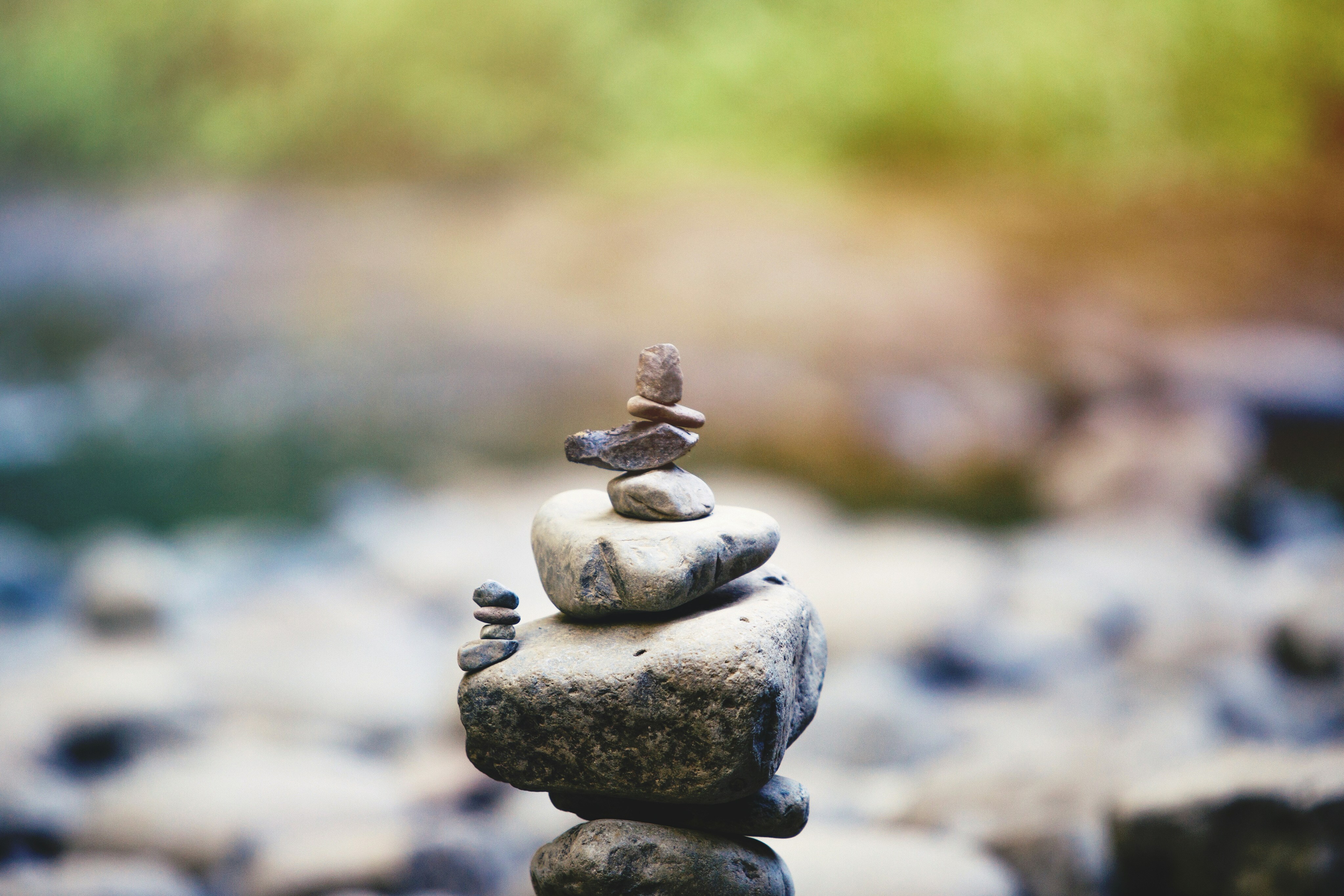What Is Patanjali Yoga?
When I first started yoga, I was pretty confused. There were so many types out there—hatha, vinyasa, ashtanga, kundalini…even goat yoga! For myself and many, it feels like standing in the cereal aisle at the grocery store trying to pick just one box, while being overwhelmed by the variety that is often presented in a foreign language!
So today I’d like to help you gain an understanding of Patanjali yoga, which is often called the original form of yoga. Patanjali yoga is a whole system that combines philosophy, breath control, physical postures, and meditation as a holistic guideline to a better life, both in terms of health and spirituality.
This yoga style closely follows the wisdom of ancient Vedic texts and represents a blueprint for the foundations of most contemporary yoga styles. Let’s see what defines it and sets it apart.
Going Back to Yoga’s Roots and Its Holistic Nature
When I say yoga, what comes to mind? If you’re just getting familiar with the practice, then it’s probably fast-paced flows, hot yoga classes where you sweat buckets, and power yoga sessions that feel more like a gym workout than a calming experience that grounds your emotions.
There’s nothing wrong with this image—it’s just how things have transformed. It’s still yoga, tailored to fit into fast-paced lives, busy schedules, and sedentary office jobs that make us scream: physical activity, please!
We live in a world where time is a luxury, and for many, if it doesn’t get the heart pumping, it might not seem worth the squeeze.
In a traditional sense, yoga is a holistic system of ethical principles, beliefs, spiritual observations, and several techniques for mind and breath control. Its essence is about connecting the mind, body, and spirit as a way to achieve enlightenment.
Cue Patanjali yoga here, which teaches yoga as a more traditional and holistic lifestyle, rather than simply a physical exercise.
Who Was Patanjali?
I like to think that if yoga had a wall of fame, Patanjali would be the one who would have a massive statue, right at the entrance. He is kind of a big deal in the yoga world—and not because he could master the toughest asanas or control his heartbeat—he was a gifted storyteller who was able to understand the Vedas and organize their ancient wisdom into an easy-to-follow system on how to practice yoga as a way of life.
Because of this, Patanjali is often thought of as the father of yoga. He didn’t invent yoga, but he was the first to write down its principles in a way that people could understand and follow in his collection, The Yoga Sutras.
To be honest, not much else is known about Patanjali as a person. Some say he was a sage, a scholar, or even a pseudonym for several people’s writing. But regardless of who he or they were, the impact on yoga and its practitioners is everlasting. Through the Yoga Sutras, Patanjali laid the groundwork for a practice that is as much about inner peace and self-discovery as it is about physical health.
You can read all about The Yoga Sutras in our detailed overview of the topic, which is why I won’t go into the details here. Instead, let’s find out what Patanjali yoga teaches and what can you expect if you want to start practicing it.

What Does Patanjali Yoga Teach?
When discussing Patanjali yoga, we’re talking about a practice that’s more holistic and traditional—one that follows the steps outlined by the sage Patanjali toward enlightenment. This would be a practice that takes different pieces, such as ethical principles, self-discipline, meditation, and breath work, and integrates them into a system that promotes inner peace and self-discovery, along with physical health.
Patanjali described this system as the eight limbs of yoga, sometimes referred to as the eightfold path in yoga.
While they’re named “limbs” you can also think of them as steps to the ultimate goal of yoga, which according to Patanjali is samadhi (bliss or enlightenment).
These eight steps include:
- moral disciplines or moral vows (yamas)
- positive duties or personal practices (niyamas)
- physical postures (asanas)
- techniques for breath control (pranayama)
- practices to withdraw the senses (pratyahara)
- practices for concentration (dharana)
- practices for meditation (dhyana)
- state of bliss (samadhi)
To best understand how to practice Patanjali’s yoga through his eightfold path, we can divide it into three parts.
The first part explains the conduct towards yoga—in other words, it instructs the student how to practice. The second part covers the attitude towards oneself that the practitioner should strive to master. Finally, the third part focuses on the spiritual journey.

How to Practice Patanjali Yoga
The eight steps, still very much relevant today, serve as guidelines for a meaningful and purposeful life. Here’s how they may be translated into modern practice.
Follow the Ethical Guidelines
The yamas (moral disciplines) are all about ethical standards and integrity, focusing on how the practitioner needs to behave in life, both towards their practice and their surroundings.
They include five principles that you should try to uphold when practicing Patanjali yoga. In fact, you should probably uphold them regardless of whether you’re practicing yoga or not.
Non-Violence
The first yama is ahimsa, which means non-violence. And, before you go “Well…duh!” keep in mind that non-violence in this sense refers to practicing kindness in all aspects of life. This includes doing non-harm in thoughts, words, and actions towards others and yourself.
In our world, being kind to and respecting other people is pretty important, but being kind to oneself is not often talked about. Yet, Patanjali recognizes it as an essential element of well-being and inner peace.
But ahimsa means non-violence towards all beings, not just humans. Because of this, many people interpret this moral discipline as an advocacy for a vegetarian diet.
Would this mean that you’ll need to be vegetarian to practice Patanjali yoga? It’s a topic open for debate and some schools promote vegetarianism, while others are more lax. In any case, it’s a good idea to speak with your yoga teacher about this before you commit to the practice.
Truthfulness
Being honest, or satya, highlights the importance of how you communicate with others. If you’re practicing Patanjali yoga, you should always strive to tell the truth. But, keep in mind that you shouldn’t use that as an excuse to be rude.
Non-Stealing
This is another one that at a glance, seems like the most obvious thing ever. Stealing is a crime. But, in Patanjali yoga, asteya extends beyond not taking what isn’t yours and includes not coveting others’ possessions, achievements, or even ideas.
Additionally, asteya also refers to not stealing your own or someone else’s time, being mindful of and respecting their schedule and priorities.
Continence
Okay, this one is a bit tough, as it was traditionally seen as celibacy, but many people and schools interpret it in a much broader sense to mean the responsible use of energy (yes, including sexual energy).
The essence of brahmacharya is self-control and not giving in to our urges. Depending on how you interpret this concept, it may include not eating more than you need or in the late hours, wearing jewelry or cosmetics, indulging in luxuries, and so on.
Therefore, a committed yoga practitioner is someone who is very restrained and lives a minimalistic and simple life.
Non-Possessiveness
Aparigraha is the moral vow that encourages practitioners to let go of greed and materialism. Similarly to continence, non-possessiveness is about showing restraint.
Therefore, if you practice Patanjali yoga, you should try to let go of all the things that you don’t need and focus on reducing your “wants.”

Embrace the Self-Restrictive Principles
While even the yamas can be interpreted as self-restrained, especially when it comes to indulgences, the niyamas are considered more personal observances. They include:
- Saucha (Purity): This principle promotes hygiene of the body, mind, and the things that you come into contact with, including your room, house, and any personal objects.
- Santosha (Contentment): This is about finding happiness in what you have, rather than being upset about what you don’t have. It encourages people to accept themselves as they are and to let go of negative emotions or a negative self-image.
- Tapas (Discipline): You should be consistent and practice regularly and with passion. However, this principle also extends to everything else in life, being self-disciplined and seeing things through.
- Svadhyaya (Self-Study): Knowing oneself is another virtue that practitioners should cultivate. This can be developed through self-study (introspection) and the study of sacred texts.
- Ishvara Pranidhana (Surrender to a Higher Power): Finally, practitioners should let go of their ego and have something greater than themselves to believe in.
Asana, Pranayama, and Pratyahara
In addition to the niyamas, practices that also promote self-discipline and personal growth include asana, pranayama, and pratyahara.
The asanas are probably what most people think of when they hear “yoga.” However, in Patanjali yoga, there are not really specific postures (like we know them today) that you need to master, but they rather refer to your posture in general, as you go through life. The word asana is only mentioned in 3 of the 195 aphorisms. Patanjali believed that the postures need to be steady and comfortable, practiced with meditation, and free from judgment, so these are the things you should focus on.
Pranayama refers to breath control and is another common aspect of modern practices. According to Patanjali, practitioners should practice breathing techniques to master the respiratory process while recognizing the connection between the breath, the mind, and the emotions.
Finally, as a Patanjali yoga student, you’ll need to practice introspection or pratyahara, which is the act of withdrawing the senses (and attention) inward, away from external distractions. The goal is to improve your inner awareness.

Commit to a Spiritual Journey
On top of the ethical guidelines, restrictions, and self-care practices, you’re also expected to nurture your spirituality and train your mind to master the skill of stillness and concentration.
Patanjali believed that this spiritual path can be achieved through three stages.
1. Dharana (Concentration)
First up is concentration, or dharana—the practice that will lead you to deeper self-awareness. You’ll learn to focus on a single point or idea without allowing distractions to take over. This could be as simple as focusing on your breath, a mantra, or even a candle flame.
Try dharana in your daily routine by dedicating a few minutes each morning to sitting quietly and focusing solely on your breathing. Every time your mind wanders, gently guide it back.
Once you master dharana, you’ll be ready to try dhyana.
2. Dhyana (Meditation)
Dhyana or meditation is another very important aspect of Patanjali yoga, one that’s necessary for your journey to samadhi. However, practicing it requires a lot of training and dedication.
Meditation is often described as a continuous flow of thought and awareness towards the object of your focus. It’s also the state where the mind becomes quiet and the body is still.
When practicing Patanjali yoga, gradually increase the time you spend in focused concentration to ease into meditation. Apps or guided meditations can be helpful but also try sitting in silence, allowing yourself to become absorbed in the stillness. The key is consistency—even 5-10 minutes a day can significantly impact your ability to reach deeper states of meditation.

3. Samadhi (Bliss or Enlightenment)
After years and years of practicing dhyana and becoming better at it, you may be lucky to experience samadhi. According to Patanjali, samadhi is the final step in his eightfold path to yoga, and the ultimate goal of the practice.
Samadhi is described as a serene and joyful state of consciousness where the person meditating can no longer distinguish themselves from the meditation process or maintain any distinct personal identity (in a good way!). This state transcends the ego and the false notion of being separate from your environment, allowing one to experience undisturbed peace, free from emotions like longing and irritation.
In this sense, samadhi aligns individuals with their authentic Self, merging them with the universal consciousness.
And unfortunately, there’s no single thing that you can do to experience samadhi. It’s something that comes as a result of an authentic and dedicated practice, and you must believe in it.

Enrich Your Daily Practice
As we begin to discover Patanjali yoga, from the physical postures to the profound depths of meditation and spiritual enlightenment, it becomes clear that this ancient practice is much more than a sweaty exercise.
Patanjali yoga takes a more holistic approach to health and mental well-being, balancing our body, mind, and spirit with one goal: to help us become one with universal consciousness.
Instead of a physical practice, you should think of it as a lifestyle adjustment—a blueprint for living a life of purpose, balance, and inner peace. By embracing ethical principles and self-disciplinary practices and committing to a spiritual journey, you open yourself up to a transformative experience that extends beyond the yoga mat.
So, as you fold up your yoga mat and step back into the hustle and bustle of everyday life, think of what you want to get out of your practice and whether such a lifestyle, as envisioned by Patanjali, would be something that you want to invest in.
Regardless of what your choice is, you can always count on DoYogaWithMe to support your decision with insightful resources, free classes, guided meditations, a close-knit community, and fun yoga retreats.













